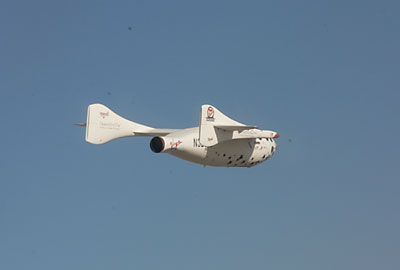The end of aerospaceby Taylor Dinerman
|
| The giant aerospace companies are, is essence, defense contractors, with dual-use space divisions. |
Nothing is necessarily wrong with this. A few large unfocused US companies do quite well: GE, United Technologies, and 3M all manage to thrive in spite of their lack of a single core product. It does take extraordinary management and leadership skills to keep these companies prospering, however, and without it they may go the way of the old conglomerates of the 1960s.
For today’s aerospace giants the problem is that while they may be skilled at winning competitions or at teaming with those that do, they seem to lack the ability to inspire young professionals. Extraordinary feats of engineering and technological skill are needed to radically improve things such as access to low Earth orbit (LEO) or in space propulsion. Such breakthroughs will most likely come from the “NewSpace” sector or from university-based researchers.
The problem is not specific to Boeing or Lockheed Martin: they actually compare well to most other industrial dinosaurs such as General Motors or Ford. It’s obvious that huge corporations, run according to sound business principles and subject to everything from the latest Sarbanes Oxley regulations to “grandfathered in” union agreements from the 1940s, are not going to stick their necks out seeking major technological breakthroughs, at least not with their own money.
Over the next decade we should expect that the space divisions of these large firms will become increasingly autonomous. They will develop their own corporate strategies and will take greater control of hiring and promotion. Above all they will be given control of a larger slice of the net profits in order to carry out complex R&D programs and to acquire smaller innovative companies and the extremely valuable intellectual property that goes along with them.
The greatest harm the “aerospace” mentality does to the national interest is in the area of military space doctrine and policy. This has evolved along lines originally laid out for air warfare and adapted to achieving the tactical, operational and strategic goals of the air campaign. This is most evident in the way that the space forces have been forced to think in terms of separate missile defense, defensive counterspace, and offensive counterspace systems and operations. While having different plans and weapons for use in defending one’s own airfields, infrastructure, and other targets and attacking those of the enemy make good sense, the same model does not necessarily work in space. Satellites and warheads in LEO travel at similar altitudes and velocities. In the near future satellites, like warheads, may have their own sets of decoys, and distinguishing between those decoys and the targets will require the same kinds of surveillance, tracking, and discrimination that an operational missile defense system needs.
Warfare in medium and geosynchronous orbits, and beyond, will have different characteristics and challenges from those in LEO. Different parts of this theater of war require different approaches, and the tactics and operational methods used to fight in each area will have to be adapted to the particular environment without reference to an terrestrial template.
In the 1920s air power theorists often claimed that strategic bombing, all by itself, could win future wars. The Italian Guilo Douhet was one of the most extreme proponents of this view. Since then it has been put to the test, and with the single, questionable exception of the 1999 war between NATO and Serbia over Kosovo, it has never worked.
| US space supremacy is a thing of the past, if indeed it ever existed in the first place. |
No space power advocate has ever made the case that space systems and weapons could, by themselves, win a war. At most they can give the side that has them and uses them as part of an effective strategy a decisive advantage. US space power is an enabling, force-multiplying complex of hardware, software, personnel, and ideas that exists to support the goals of the president and the theater commanders.
US space supremacy is a thing of the past, if indeed it ever existed in the first place. Having a lot of defenseless high-value targets in orbit does not translate into military superiority in the face of any kind of attack. The problem can be remedied, but only by building a new kind of space asset designed to survive in a new realm, full of enemy active measures.
Space power is a national asset that needs dedicated stewardship. The problem will not be solved by recreating the National Space Council chaired by the Vice President or a new government-industry panel. Creating a new space service, though ultimately desirable, will do little to help overcome these difficulties in the short run. What is needed is a set of leaders in government and industry who have the vision and the courage to push for it, to protect it, and to make sure that it is properly used.
